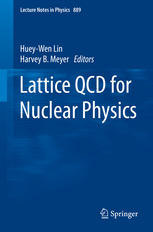

Most ebook files are in PDF format, so you can easily read them using various software such as Foxit Reader or directly on the Google Chrome browser.
Some ebook files are released by publishers in other formats such as .awz, .mobi, .epub, .fb2, etc. You may need to install specific software to read these formats on mobile/PC, such as Calibre.
Please read the tutorial at this link: https://ebookbell.com/faq
We offer FREE conversion to the popular formats you request; however, this may take some time. Therefore, right after payment, please email us, and we will try to provide the service as quickly as possible.
For some exceptional file formats or broken links (if any), please refrain from opening any disputes. Instead, email us first, and we will try to assist within a maximum of 6 hours.
EbookBell Team

4.0
16 reviewsWith ever increasing computational resources and improvements in algorithms, new opportunities are emerging for lattice gauge theory to address key questions in strongly interacting systems, such as nuclear matter.
Calculations today use dynamical gauge-field ensembles with degenerate light up/down quarks and the strange quark and it is possible now to consider including charm-quark degrees of freedom in the QCD vacuum. Pion masses and other sources of systematic error, such as finite-volume and discretization effects, are beginning to be quantified systematically. Altogether, an era of precision calculation has begun and many new observables will be calculated at the new computational facilities.
The aim of this set of lectures is to provide graduate students with a grounding in the application of lattice gauge theory methods to strongly interacting systems and in particular to nuclear physics. A wide variety of topics are covered, including continuum field theory, lattice discretizations, hadron spectroscopy and structure, many-body systems, together with more topical lectures in nuclear physics aimed a providing a broad phenomenological background. Exercises to encourage hands-on experience with parallel computing and data analysis are included.